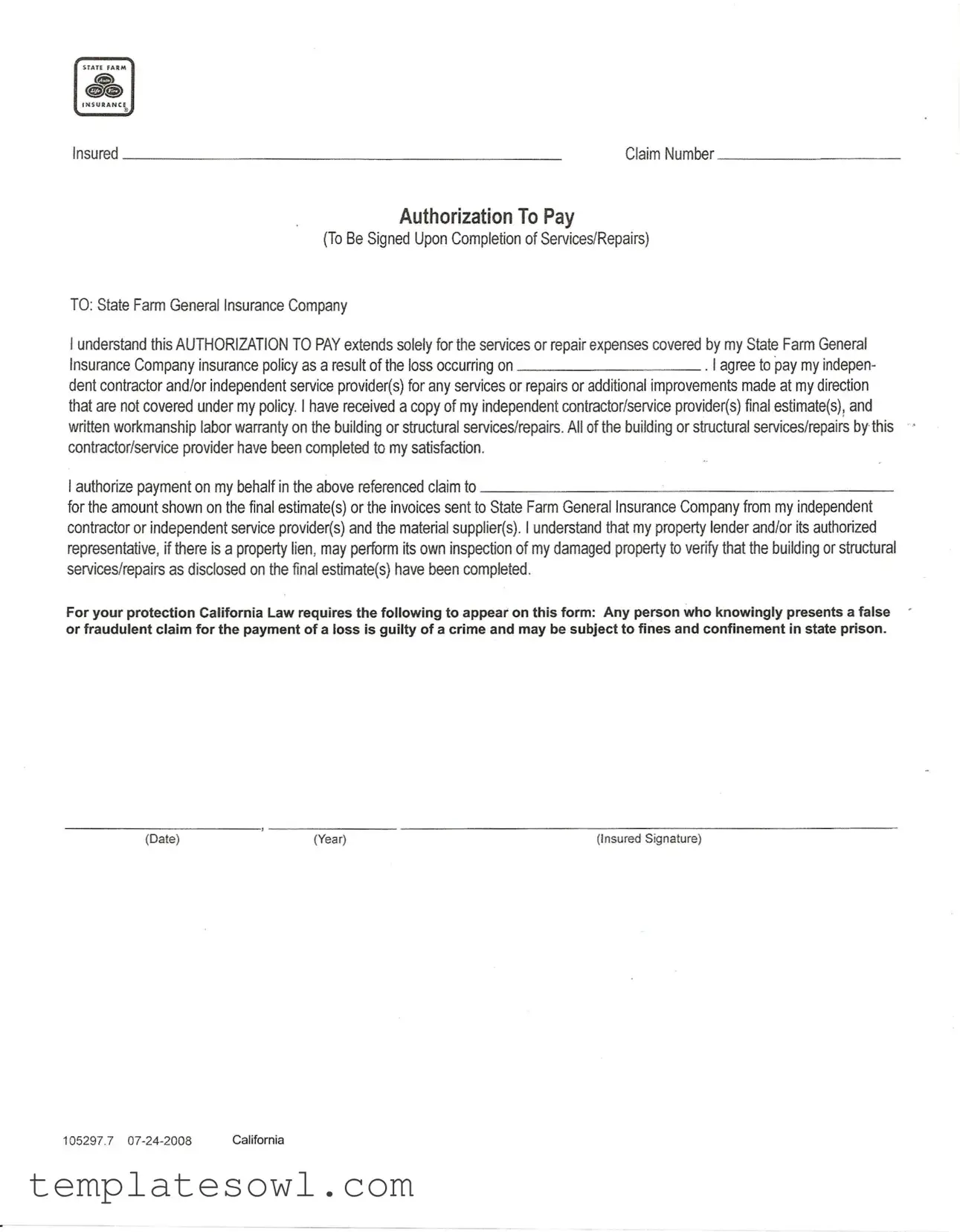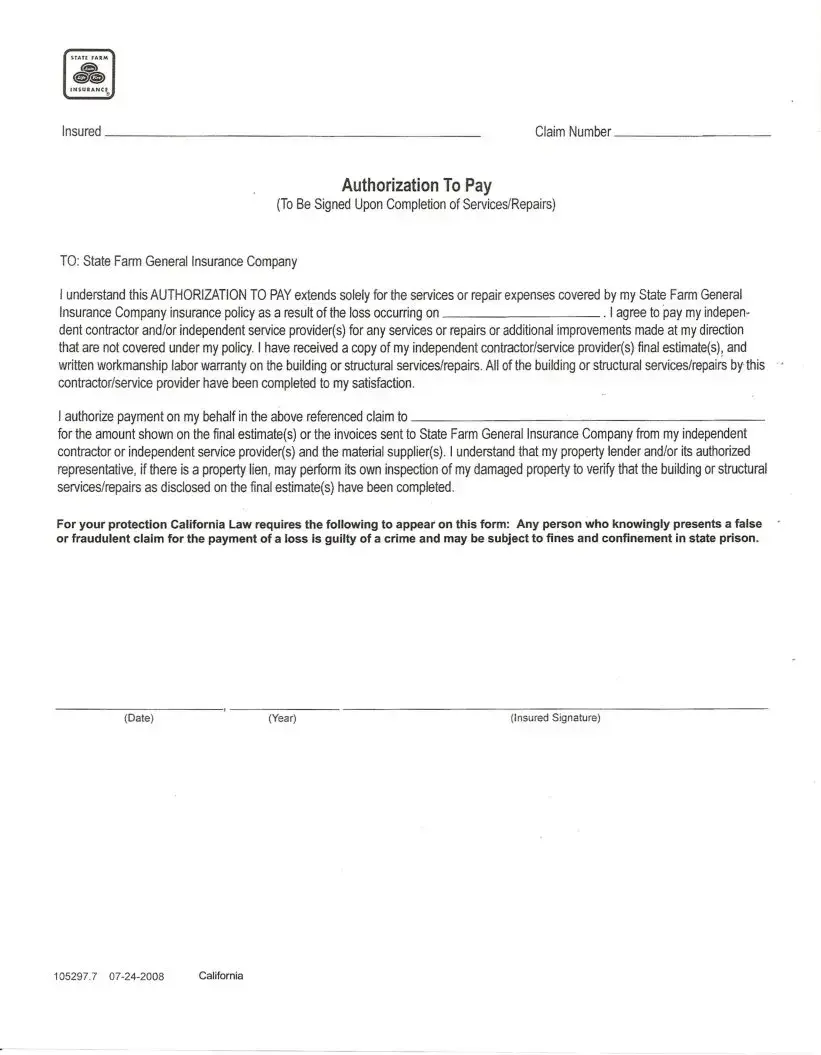Filling out the State Farm Authorization To Pay form may seem straightforward, but mistakes can lead to delays or issues with claims. One common error is failing to fill in the claim number. This number is crucial, as it helps the insurance company identify and process the claim efficiently. Omitting this detail can cause confusion and result in unnecessary delays.
Another mistake often made is not including the correct amount. Individuals sometimes write an estimated figure instead of the actual amount shown on the final estimate or invoice. This discrepancy may lead to incorrect payments and could complicate the entire claims process.
People frequently overlook providing their signature. It is essential to sign the form for it to be valid. Without a signature, State Farm cannot proceed with payment, and it may be returned for correction, wasting valuable time.
Many individuals also forget to indicate the date of completion of the services or repairs. This date is important for record-keeping and helps prevent confusion regarding when the work was done. If the date is missing, it could lead to additional follow-up questions from the insurance company.
Another common error is not retaining a copy of the final estimate or invoices submitted with the form. Keeping these documents is vital, as they provide proof of the services rendered and the agreed-upon amounts. Losing these documents can complicate future disputes or questions regarding the claim.
Sometimes, individuals fail to review the terms and conditions of their policy before filling out the form. This oversight can lead to misunderstandings about what is covered and what services are eligible for payment. Familiarity with the policy sets clear expectations and helps ensure that all necessary expenses are included.
People often neglect to provide documentation related to warranties or guarantees on the work done. Providing this documentation can strengthen the claim and demonstrate the quality and assurance of the repairs made. Omitting such details can weaken the insurance company’s ability to approve the claim swiftly.
Another mistake is rushing through the form, leading to typos or unclear handwriting. Errors such as these can create confusion about the details of the claim and delay processing time. Taking a moment to double-check for clarity can significantly enhance the form's effectiveness.
Another point of practice is failing to understand the implications of the form’s authorization. Some individuals may not realize that by signing it, they authorize State Farm to pay the contractor directly. This lack of clarity can lead to surprises later when payments are processed without the insured's explicit consent.
Lastly, individuals sometimes submit the form without confirming that all repairs have been satisfactorily completed. It is essential to ensure that the work meets expectations before authorizing payment. Skipping this step can lead to dissatisfaction and complicate the resolution of potential disputes with the contractor.

